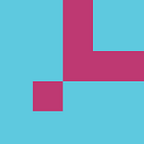Max and Jonas spend too much time together. “My girlfriend has started to call Max my side chick,” Jonas jokes. “At the beginning, I was in Melbourne, Max was in Singapore, and our tech partners are based in Silicon Valley — so we had to meet at crazy times. But we’ve worked through that and things are much calmer now.”
Despite having completely different interests, Max and Jonas found their skills were actually complementary — enabling them to come up with a new idea and roll with it. “Max is the tech expert,” says Jonas, “whereas I’m more interested in the business side of things — how to maneuver ideas through the politics of a company by speaking to the right people and securing funding.”
They credit the networking aspect of the Siemens Graduate Program for their chance meeting — as new recruits they were placed in rotation across different departments and teams, enabling them to experience a range of potential roles.
Shaking up the supply chain
“One night, we were sitting in a bar in Berlin,” explains Jonas, “when Max told me he had invested in cryptocurrency. We got talking about blockchain and how it has the potential to radically change things, and then started coming up with ways we could use it totally overhaul the way we do supply chain management.” And so the idea to transform the way engineers log, track, and share data was born.
“Imagine someone on a construction site, who’s actually assembling a product,” says Max. “What happens if they have feedback on how it works, where do they log that information?”
Reacting to the potential knowledge gaps that might occur within a supply chain — whether that relates to price, availability, functionality or performance — the pair set about looking for a way to gather and store this constantly evolving data.
Blocks of data build a bank of knowledge
After hitting the headlines when cryptocurrencies such as Bitcoin first emerged in 2009, blockchain has become the darling of the tech industry, thanks to its ability to secure and verify digital money. Since then, every technology company in the world has been trying to use it for another groundbreaking product.
So, how does blockchain work? Essentially, it’s a digital ledger — the secure, easy to use, and long sought-after answer to the fundamental problem of digitalization: how do we validate, secure, and share data?
“Blockchain can bring everything together, compiling an A-Z of data with lots of partners contributing to a single pool of information, all while keeping it secure and transparent,” Max explains. It means that, in the future, everyone from an engineer to a manager can tap into a collective bank of knowledge built up over years of experience.
Behind every good idea is a solid mentor
From the offset, Max and Jonas knew they couldn’t execute their idea alone, they needed the help of mentors who would challenge them to push themselves. So they turned to their colleagues for help. “I met Thomas Holzner, who heads Supply Chain Management Digitalization, during my second rotation within the consulting group,” says Jonas. “He had a really different management style. Once you gain his trust, he gives you all the freedom in the world to pursue your goals the way you think is right.” Thomas supported the pair any way he could — troubleshooting roadblocks, taking late-night phone calls, and helping them navigate their way through the complex world of company structures.
Their other mentor was Dirk Nuernberger, VP of Procurement for his Business Unit. He was Max’s first assignment manager, and when the pair came to him for help, Dirk immediately offered his assistance: “We said there was this cool new technology called blockchain, and he just turned around and said: ‘This is the next big thing guys, I totally support you.’”
Hard work turned a great idea into a reality for Siemens
Their idea was to use blockchain to create an app that allows engineers to access information about a product or item’s entire lifecycle. At the click of a button, anyone can simply scan a barcode and immediately find out its history, when it was last used, and any other notes, feedback, or recent repairs and issues.
“We were allowed to make mistakes,” explains Max. “So long as we learned from them and moved forward.” By December 2017, the pair had a proof of concept — the very first step in articulating how their idea could have a real-world application, and demonstrating that blockchain could bring transparency to the complicated arena of supply chain management.
“It’s been quite a ride over the past three months,” says Max. “From night shifts where we would stew over our concepts again and again, to actually standing on a power plant site and providing a useful application for the operational service staff. I can tell you, it is an amazing feeling to see your ideas and visions become reality.”
How blockchain can change the lives of engineers:
After finishing his MSc in Industrial Engineering and Management at the University of Hamburg, Jonas has forged a career in procurement for wind power, energy management, and healthcare. In his current role as a consultant, he supports procurement teams worldwide — always passionate about bringing digital innovation to the operational business.
From New York to Berlin and Singapore, Max has traveled the world shaping the future of rail automation, energy, power, and gas. He has recently been offered the job of Digital Procurement Expert in Berlin, where his main responsibility will be to continue executing innovative pilots in the context of new technologies such as blockchain, AI, and big data.
Illustration: Danilo Agutoli
